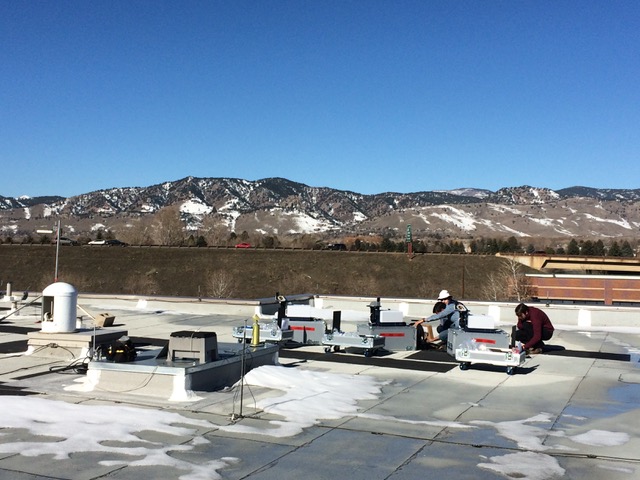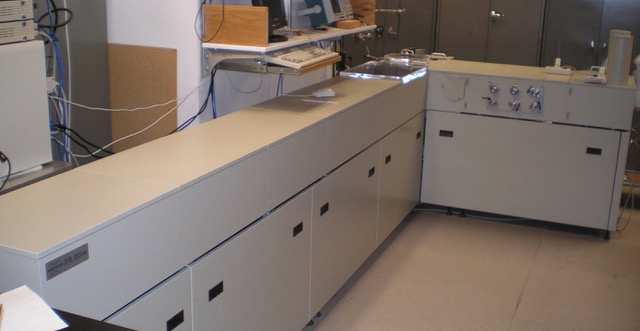In January 2021, the solar FTIR instrument at NCAR in Boulder was accepted as a formal NDACC station. The Infrared Working Group (IRWG) is composed of 20 stations making daily observations and producing vertical profiles of 12 standard species. The Boulder station has been operating since 2010 at NCAR by PI James Hannigan. In 2017, the instrument was upgraded to a Bruker 125 that is the standard across the NDACC.

Figure 1: Rooftop of the NCAAR lab. On left is the white dome of the existing solar tracker. 3 Bruker EM27 instruments are operational on the roof as part of a COCCON inter-calibration and oil and natural gas emission flux campaign.
The station is at 1.6 km.a.s.l. in the suburban high plains of the Front Range of Colorado, USA. It is the only continuously operating IRWG instrument in continental U.S. At the dry moderately high altitude location, there are more then 300 days of sunshine per year. The data provides sampling opportunities to measure air from the west, typically clean but at times include plumes from near (Colorado) or distant (Pacific coast) biomass burning events, airmasses from the northeast that pass through the extensive oil and natural gas extraction and processing region of the Denver-Julesberg basin and then the metropolitan Denver region to the south. These measurements provide valuable and unique insight into the diverse tropospheric environment that includes natural and anthropogenic emissions. The instrument has contributed to many studies already: several to understand local oil and natural gas emissions contribution to the rise in northern hemispheric ethane and methane and others using trends and excursions of CO, NH3, C2H6, CH4, O3, HCN, H2CO to discern biomass burning and oil and natural gas plumes in determining emission ratios. The 600cm instrument is also used for laboratory experiments and as calibration for other remote sensing instrumentation. The instrument is near other NOAA operated NDACC instruments and will soon have a PGN Pandora instrument co-located on site.

Figure 2: The 600cm OPD Bruker 125 HR.
An upgrade in progress is to automate the observations using local weather and solar data and after
that, it is planned to replace the solar tracker with an altazimuth tracker employing hybrid ephemeris and active camera tracking control. This will bring more diurnal coverage, increase observation days and increase pointing precision including through wildfire plumes.
An overview of the system can be seen at Ortega et. al., https://www.sciencedirect.com/science/article/abs/pii/S1352231021004854 Plots of daily data can be found at https://www2.acom.ucar.edu/optical-techniques/current-data and more information on the IRWG is at: https://www2.acom.ucar.edu/irwg
-Jim Hannigan, PI, NCAR